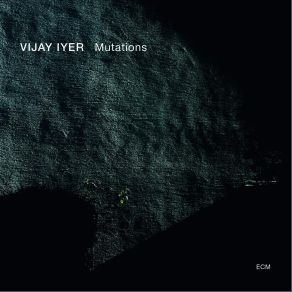Mutations
Download links and information about Mutations by Vijay Iyer. This album was released in 2014 and it belongs to Jazz, Avant Garde Jazz genres. It contains 13 tracks with total duration of 01:00:12 minutes.

|
|
|---|---|
| Artist: | Vijay Iyer |
| Release date: | 2014 |
| Genre: | Jazz, Avant Garde Jazz |
| Tracks: | 13 |
| Duration: | 01:00:12 |
| Buy it NOW at: | |
| Buy on iTunes $11.99 | |
| Buy on Amazon $11.49 | |
Tracks
[Edit]| No. | Title | Length |
|---|---|---|
| 1. | Spellbound and Sacrosanct, Cowrie Shells and the Shimmering Sea | 7:39 |
| 2. | Vuln, Pt. 2 | 4:34 |
| 3. | Mutation I: Air | 4:12 |
| 4. | Mutation II: Rise | 2:44 |
| 5. | Mutation III: Canon | 5:47 |
| 6. | Mutation IV: Chain | 5:25 |
| 7. | Mutation V: Automata | 6:32 |
| 8. | Mutation VI: Waves | 3:00 |
| 9. | Mutation VII: Kernel | 5:59 |
| 10. | Mutation VIII: Clade | 1:34 |
| 11. | Mutation IX: Descent | 5:17 |
| 12. | Mutation X: Time | 4:00 |
| 13. | When We're Gone | 3:29 |
Details
[Edit]Mutations is not only Vijay Iyer's debut album for ECM, but also the first recording he's issued since winning a MacArthur Foundation "genius" grant in the fall of 2013. As a recording, it is certainly among his most provocative. There are no traces of his Hindustani or Carnatic jazz explorations, his athletic post-bop or modal works, or even his explosive readings of modern pop. This is a showcase for Iyer the composer. Even the set opener, a solo piano reading of "Spellbound and Sacrosanct, Cowrie Shells and the Shimmering Sea," which appeared on Memorophilia—his 1995 debut—showcases its harmonic subtleties and formal construction over improvisation — though it's certainly there. The album's title is actually a ten-part suite for piano, string quartet, and electronics originally composed and premiered in 2005; it has been evolving ever since. The srting quartet was specially assembled for this date. Iyer played violin for 15 years before devoting himself to the piano. He has not only played in string quartets, but has written for them and performed with them — and larger classical ensembles — as well. Mutations is an incremental piece based on his perception of "...evolution as a dynamic, noisy interaction between a species and innumerable, competing, fluctuating environmental factors...." Each of these sections undergoes a mutation, as notation— with the interaction of the players—begin to shift and change with the introduction of an inconstancy or interruptive figure in a recurrent theme. Samples of the players are also introduced to alter themes and create altering textural and dynamic factors. The piano is one such element, and improvisation — especially in "Mutations VII: Kernel" — is another. The notation was simply handed out to be freely played with by the strings as they saw fit. Despite the possibility for chaos and obstructive dissonance, Mutations is aesthetically beautiful. throughout, articulated fragments and melodies interact in rhythmic and open frames, counterpoint, and harmony, even as they converse, gradually exchanging one flow of thought for another. In "Mutation III: Canon" the ghosts of Beethoven, Bartók, Stravinsky, Carter, Strayhorn, and Evans visit, though fluid spontaneity reigns overall. As the individual movements evolve, so does the overall structure of the work, arriving at "Mutations X: Time," the elastic of all philosophical and scientific constructs as the slippery undercurrent of rhythms suggest. "Vuln, Pt. 2" and "When We're Gone" are recent works for piano and electronics. The primary instrument engages in counterpoint and exchange with synthetic textures and rhythms. They stand out from the central work, but don't distract from its impact and feel more like extensions of it. Along with tis keen compositional attributes, Mutations rewards with well-considered, inspired performances. Whether fans of Iyer's jazz work will follow him here remains to be seen. That said, whether or not they do doesn't diminish the artist's considerable achievement.